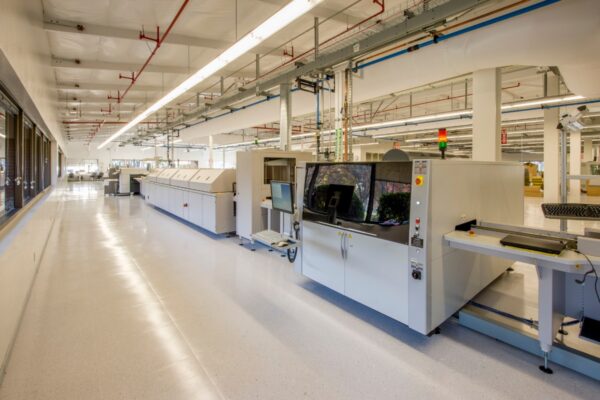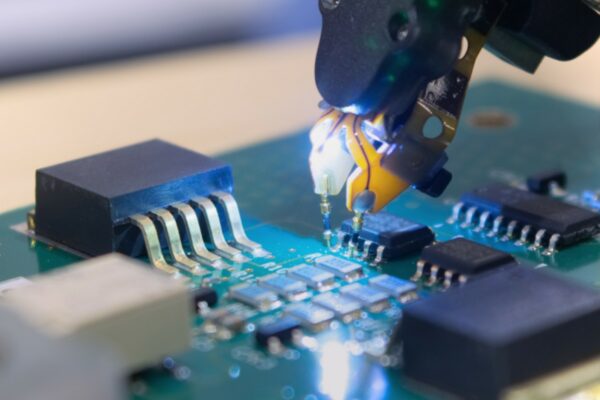A field failure isn’t just an inconvenience; it’s the start of a ticking clock. Every returned unit waiting for a diagnosis represents a compounding liability. The real problem isn’t the single faulty board on the bench. It’s the hundreds, even thousands, of identical boards still being manufactured and shipped, each a potential echo of the same hidden defect.
Traditional feedback loops are too slow for this reality. Weeks of emails, competing analyses, and blame-shifting between design and production allow minor issues to metastasize into financial catastrophes. We rejected that model. At Bester PCBA, we engineered a system to deliver definitive root cause analysis and actionable feedback in 48 hours. This isn’t about working faster; it’s about working smarter within a system built for clarity and speed. It’s how you stop problems from compounding and margins from bleeding.
The Compounding Cost of a Slow “No”
Consider a 1% failure rate discovered on a lot of 10,000 units. If the root cause isn’t found before the next lot ships, the problem doubles. By the time a traditional, weeks-long analysis concludes, 40,000 suspect units could already be in the channel, in warehouses, or in the hands of customers. The cost is no longer just materials and labor.
The true liability is the sum of return logistics, warranty claims, diagnostic engineering hours, and the immense reputational damage from an unreliable product. What began as a small process drift, like a slight change in component placement or a minor solder paste inconsistency, has become an existential threat to the product line’s profitability.
The absence of a quick, definitive answer creates a vacuum filled with guesswork and inter-departmental friction. Engineering blames manufacturing; manufacturing points to a component supplier. Without hard data, no meaningful action can be taken, and the production line keeps replicating the error. This is the price of a slow “no.”
The Anatomy of a Modern PCBA Failure
Root cause analysis is detective work. The defects that cause the most damage are rarely obvious; they are intermittent, invisible to the naked eye, or rooted in a complex interplay of design, materials, and process. Our analysis begins by untangling this complexity.
Manufacturing Flaws vs. Design Oversights

A critical first step is determining the fault’s origin. A manufacturing flaw, such as a cold solder joint or component misalignment, can often be corrected quickly with process adjustments. A Design for Manufacturability (DFM) oversight, however, is more fundamental. A pad design that encourages tombstoning or component placement that creates a thermal imbalance requires a board-level revision. Our role is to provide the irrefutable evidence that distinguishes one from the other, ending the debate so the solution can begin.
Hunting for Intermittent and Process-Related Faults
The most frustrating failures are those that can’t be easily replicated. A board might fail only at a specific temperature or after vibration. These intermittent faults often point to issues like cracked solder joints under a BGA or micro-fractures in a component. These aren’t obvious defects but symptoms of a process operating at the edge of its control window. Our analysis is built to hunt for these elusive faults and trace them back to a specific, correctable process variable.
Our 48-Hour Playbook: From Field Return to Actionable Intelligence
To break the cycle of compounding failures, we developed a rigorous, time-bound playbook. It’s a systematic process that transforms a failed board into actionable intelligence within two business days.
Phase 1: Triage and Non-Destructive Inspection (First 12 Hours)
The clock starts the moment a return arrives. Our first priority is gathering as much data as possible without altering the board’s state. We document the reported failure mode and perform a comprehensive optical and X-ray inspection. This identifies obvious defects like solder bridges or shorts and maps out areas of interest for a deeper dive.
Phase 2: Root Cause Pinpointing with Destructive Analysis (Next 24 Hours)
Once non-destructive methods are exhausted, we proceed with targeted, methodical deconstruction to confirm or deny the initial hypotheses. This may involve carefully removing components to inspect underlying pads, performing dye-and-pry tests on BGAs, or creating micro-sections of suspect solder joints. This stage moves from suspicion to certainty, generating physical evidence of the failure’s root cause.
Phase 3: Corrective Action Report and Loop Closure (Final 12 Hours)
Data without a conclusion is noise. In the final phase, our engineering team synthesizes every finding—from X-ray images to micro-section photographs—into a single, concise report. This document doesn’t just state the failure mode; it identifies the root cause and provides specific, actionable recommendations to prevent recurrence. This report is the key that closes the loop, delivered within our 48-hour window.
The Arsenal: Tools for Definitive Answers
Executing this playbook requires more than a good process; it requires the right tools. Our failure analysis lab is equipped with the technology needed to get definitive answers quickly.
Automated X-Ray Inspection (AXI) for Hidden Solder Defects
Many critical solder joints, especially in complex packages like BGAs, are hidden from view. Our AXI systems let us see through components to inspect for voids, bridges, and insufficient solder—defects impossible to catch with optical inspection alone. It is our first line of defense against hidden manufacturing flaws.
Micro-Sectioning for Ground-Truth Validation
An X-ray can suggest a problem, but a micro-section proves it. By cutting through a suspect solder joint, encapsulating it in epoxy, and polishing it to a mirror finish, we can examine the grain structure of the solder itself. This ground-truth technique is the ultimate arbiter for diagnosing issues like poor intermetallic formation or micro-cracking that lead to long-term reliability failures.
Thermal Probing for Elusive In-Circuit Faults
For intermittent or power-related failures, we use thermal analysis. By monitoring a board’s thermal signature under load, we can quickly identify components that are overheating or not drawing power correctly. This pinpoints the exact location of an electrical fault on a complex assembly without hours of manual probing.
Closing the Loop: How Intelligence Becomes Prevention
A failure analysis report that sits in an inbox is useless. The value of our 48-hour process is realized when its intelligence is fed directly back into the manufacturing line, preventing the next lot from ever having the same problem.
Stencil Tweaks and Solder Profile Adjustments
For many common defects, the fix is a precise process adjustment. If our analysis reveals consistent solder bridging, we deliver modifications to the stencil aperture design. If we find evidence of tombstoning, we prescribe a revised reflow oven profile for more even heating. These are immediate, data-driven changes.
DFM Feedback for Board-Level Design Improvements
When our analysis uncovers a design-related issue, our feedback is just as specific. We don’t just state that a design is flawed. We provide a report with clear evidence, such as a micro-section showing stress fractures from a poorly placed component, and recommend a specific DFM correction. This empowers our clients to make informed revisions that improve their product’s inherent reliability.
The Bester PCBA Difference: A System, Not Just a Service
Placing parts on a board is a commodity. Protecting your business from the hidden risks of production is a partnership. Our 48-hour failure analysis loop isn’t an add-on service; it’s a fundamental component of our quality system, integrated into how we work.
It replaces ambiguity with data, friction with collaboration, and costly delays with decisive action. By providing a single, authoritative point of contact for analysis, we eliminate the blame game and focus all energy on the solution. We see failure not as an endpoint, but as an opportunity to learn, adapt, and make the product—and the process—stronger. This is our commitment to closing the loop.






